How Much Does It Cost to Maintain and Support an App in 2023?
Just like a house, software will fall into decay without maintenance. With mobile apps this process is faster, however, as the technology, market, and user expectations change every couple of months. Having a mobile app isn’t a result; it’s a process. In this article, I’ll show you the process of maintaining your mobile software
Why maintain an app?
When your app is ready and deployed on the markets, its lifecycle has only begun. Now you’ll need to attract users, meaning more load on your servers and more responsibility for your app, and this is where mobile app support and maintenance come into play.
According to Statista, each quarter, around 100,000 new apps appear on Google Play.
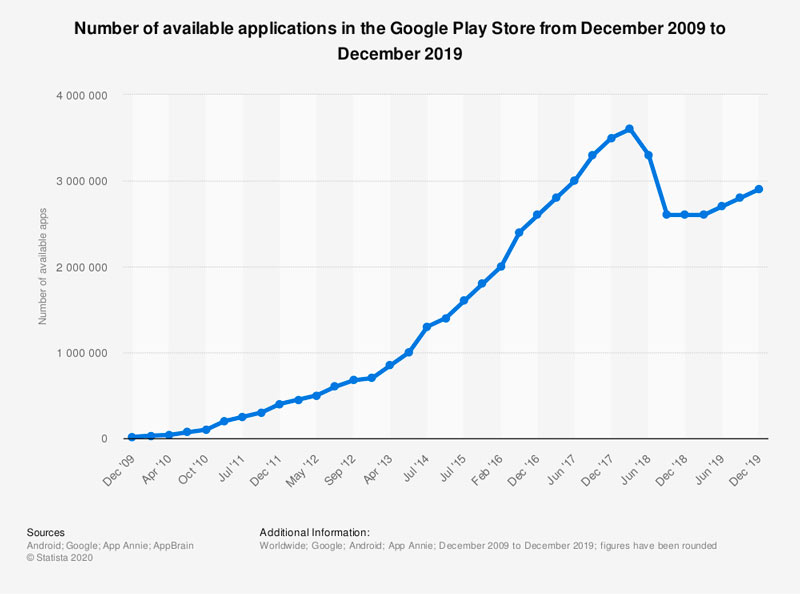
Most of these apps are abandoned completely after they’re released — the cause for Google’s deleting a great number of apps from the Play Store in summer 2018. In 2016, 51% of apps in the Play Store hadn’t been updated in over a year.
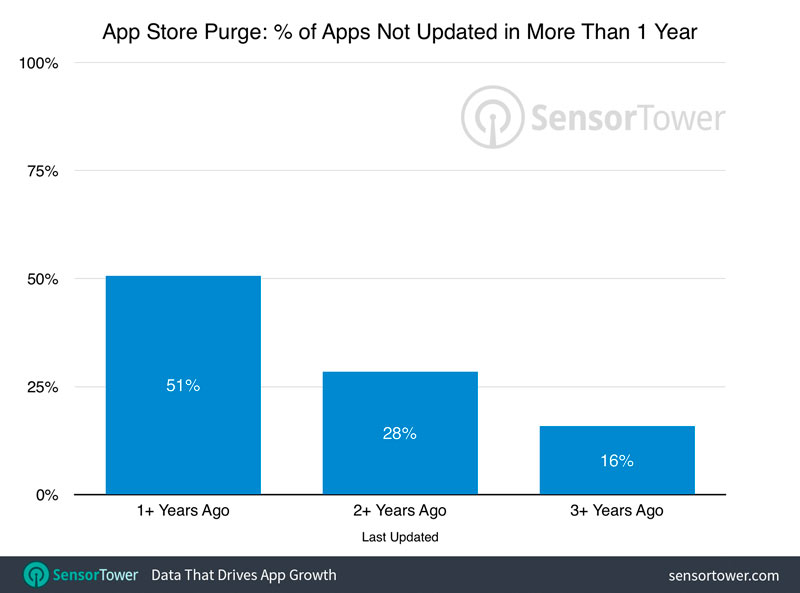
Many makers aren’t able to keep up with the fast-moving mobile market and abandon their software, losing all investments they made in their software. Because app makers stop investing in maintenance, they start losing their users as well, and soon enough the app dies completely.
The number of abandoned apps is the best illustration of why maintenance is the most important part of your app’s lifecycle. Let’s see why mobile apps need to be supported and maintained, then look at how you can do that.
1. New versions of software
Libraries and operating systems change regularly. This has a massive influence due to changes in features, layout guidelines, and even developer tools. For example, iOS 13 changed the UI drastically, and all iOS apps needed to be adapted.
Libraries also get updated constantly, and it’s vital to update them in your software. There have been countless cases when a company faced a data leak because of a minor glitch in a third-party library that gave hackers access to the app’s data. New versions of libraries ensure a better experience and fewer bugs; however, many developers hesitate to update libraries because doing so can mess with the whole system.
2. New app market rules
Markets like the App Store and Google Play sometimes change their terms and conditions, so it’s vital that your development team keeps an ear to the ground and updates once any changes are announced.
3. New devices
Each year, mobile device manufacturers release new devices with different screen resolutions and their own software on top of the Android operating system. Once a popular new device is out, you need to make sure your software works well on it and adapt your layout to the new screen resolution.
4. Third-party services with recurring payments
Paying for the third-party services you use in your app is a part of your maintenance expenses. Here are some services you will likely have to pay for:
- Servers: $20 to $60/month
- Push notifications: $10/month
- Payment gateway: up to $149/month plus a fee for each transaction
- Maps: depends on the number of loads and routes
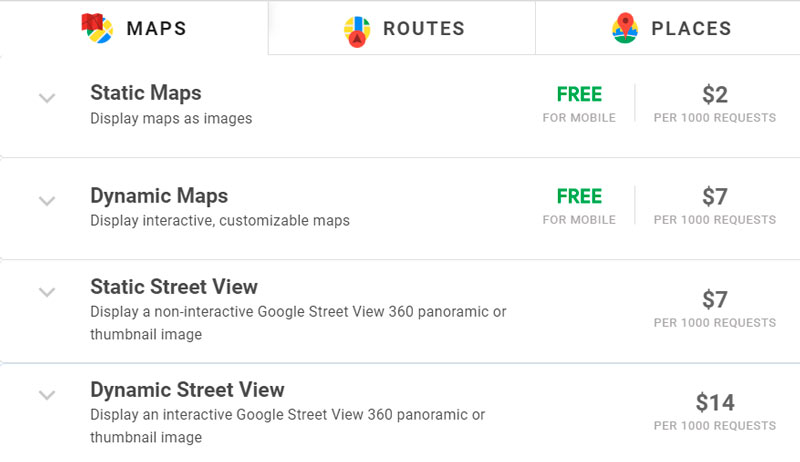
5. Technical issues
There’s no perfect software, and even large companies like Google that invest millions in their software still encounter bugs, imperfections, and data leaks. If you don’t maintain your app, it will eventually drown in imperfections, so you should not only update your software but constantly test it.
6. New market trends
When the stories feature became a trend, lots of products started adding stories to their feature stacks. Now, social media platforms like Instagram and Facebook and even guitar chord apps have stories.
Mobile development trends are especially visible in design. Seven years ago, mobile apps used to have side menus. Now the best practice is to put the most important features in the lower bar to make the design more concise and user-friendly.
You’ll need to redesign and rethink your features and consider usability enhancement after you deploy your app if you want it to stay relevant.
7. Desire for novelty
Users demand new features, especially if you have a subscription-based monetization model. If you get monetized through monthly or yearly payments, users expect to get value for their money. However, new features and updates are just as important for free apps.
8. Your app’s status
When you regularly update your application, it shows users that you care about their experience with your software and strive to make your service better. Maintaining your software is a sign of respect for your users, and the more effort you invest in your project, the more users will feel it’s worth using.
If you get monetized through monthly or yearly payments, users expect to get value for their money
9. New technologies
Trends in technologies also influence maintenance. For example, you might want to rewrite parts of your software in another technology so it works better, or you may need to transition to a new version of a programming language.
10. Keep mobile apps updated and reduce uninstalls
It’s hard getting people to install your app, but it’s even harder to get them to stay. Users will uninstall your application if it doesn’t perform well or if they encounter errors or unusual behavior. That’s why to reduce the number of uninstalls, you need to constantly test and maintain your app. Trust me, the application support costs are way lower than the costs of returning the customers you lost.
11. Deliver better user experiences
Following up on the previous point, maintaining an application and keeping it high-quality will definitely be appreciated by your users. Say, you have an e-commerce application. Any error at the checkout or during the decision-making process will get your user out of their customer journey almost immediately. Provide better user experiences, and you’ll lead your users to a successful conversion.
12. Increase ROI in the long run
A mobile application is a huge investment, often it’s hundreds of thousands of dollars. That investment can go out the window really quickly if you don’t maintain your app. Look at it this way: imagine you bought a car. At first, it works great, but as time goes on, you need to regularly change the oil, maybe replace some details, and clean it.
If you don’t do it, its value will decline drastically, and the cost of repairs will only get larger. Prevention is always cheaper than repairs. The same goes for software, where the application maintenance cost is much lower than full code rewriting and dealing with large technical debt.
13. Secure your mobile app from cyber threats
Cybersecurity issues can cost your business lost customers, damaged reputation, and broken trust. Regular maintenance allows your team to find and prevent vulnerabilities that can appear as the hackers learn new ways to get into your system.
5 steps to maintain your app
1. Build your app well from the start
The best way to save money on maintenance is to build your software with maintenance in mind from the very start. This means using a functional platform that’s easy to scale in terms of features and that uses reliable and modern technologies that won’t become outdated as soon as you finish development.
Also, you need to invest in testing, including performance, security, compatibility, and other types of testing. Testing documentation can help you with app maintenance and support later. Plus, well-tested software is just easier to support.
Another thing to pay attention to is your feature set. Users probably won’t use all the features you plan to offer them, so avoid creating unnecessary features. During the planning stage, work with a business analyst to determine what features will deliver the best experience for your users.
2. Take care of the scalability
Your app’s architecture and server infrastructure should be able to handle any number of users. When it grows and the number of users increases each day, your primary goal is smooth work, that’s why you may need to upgrade the services your app uses. Otherwise, you may quickly lose your new users as well as the money you invested in marketing.
3. Stick to your team
Each time your development team changes, either before or after deployment, you lose time. This happens because new developers need time to get accustomed to your project, learn all its ins and outs, and find out how it works and what technologies it uses.
Each time your development team changes, either before or after deployment, you lose time
When your software is maintained by the same team that created it, the process is rather fast and painless: your developers know exactly what they need to change once a new operating system version is out or a new feature is planned.
At Mobindustry, we’ll gladly maintain your product after we deliver it. We’ve been maintaining three large enterprise projects for over three years after their release.
4. Check your analytics
After you deploy your app, use analytics to find out what features are the most useful and which are ignored by your users. Find out the reasons for this and change your product accordingly.
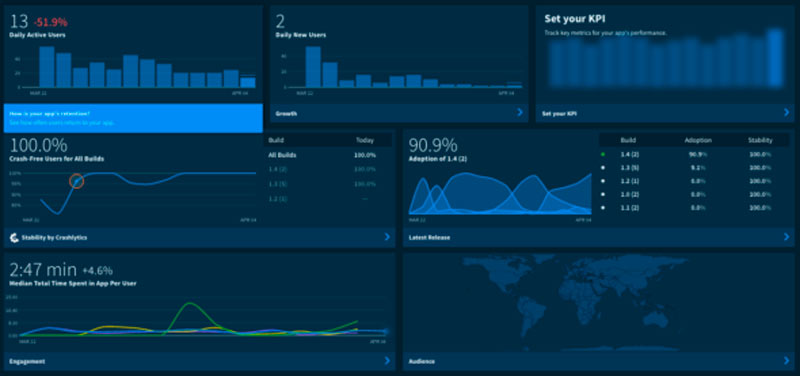
Analytics will show you which parts need optimization: for example, Crashlytics can show you where crashes occur. This information will help your team support make changes where they’re needed most.
Things that are included in the cost of the maintenance of apps
1. Focusing on hosting services
Hosting is an ongoing expense. This is something your application cannot function without. This way you can invest money according to your budget and it will give you time-limited access to the server. However, besides the length of hosting, the data type of your application also matters. You can also consider CPU memory, support for media types on the server, other features offered by the hosting provider, etc.
2. Monitoring analytics
Analytics is essential to measure the real growth of your application. Therefore, this cost cannot be avoided. Analytics will require investment in services such as traffic measurement, traffic sources, user behavior, average app usage time, and more. What’s more, tools like Google Analytics can also help you determine which part of your app is showing the most growth. so you can either draw inspiration or focus on it so that it continues to grow.
3. Identifying and fixing errors
Errors can appear unexpectedly at any time for any reason, such as server upgrades, hosting upgrades, device changes, etc. However, the cost of detecting errors and fixing them can vary depending on the type of error and the time it takes to fix it.
4. Improving customer experience
Resolving application-related issues raised by clients is also an important role for any developer. You must take their feedback seriously and resolve it. However, it is not always possible for an individual developer or a group of developers to interact directly with users. To address this issue, this role will include Customer Service Representatives (CSRs). While it also costs money, responsiveness to user requests breeds benevolence.
5. App marketing activities
Developing and publishing apps is not the end of the responsibility. Users need to be aware of any changes they are going to make to the application in order to gain their trust. Especially if these changes affect the privacy, data, or payment information of users. With every new update or modification to the app, you will have to run promotions. This will entail costs that cannot be avoided.
Types of mobile app development maintenance
App Updates & Enhancements
The most active apps in the app market receive between 1 and 4 updates per month. Here are examples of possible app updates and additional services.
- Major updates, new features, and content.
- Design improvements and UI / UX customization.
- Improvement of existing features based on customer feedback.
- Mandatory updates to support newer iOS or Android versions. This happened recently when all 32-bit iOS apps were deprecated.
- Updates to major versions of third-party APIs or frameworks that your application depends on.
App Monitoring Services
This type of service depends a lot on the size and complexity of your application. The more complex and loaded your application, the more checks it will need to keep abreast of external issues, such as library updates, and new user requirements.
App Support & Integration
These words have nothing to do with coding and development. Most of the support work is usually done by your employees or the application owner himself. The exception is integration into existing enterprise infrastructure, which is usually done by the development team during the delivery phase.
Best practices for app maintenance
Let’s talk about how exactly you should go about app support while also keeping the cost of app maintenance reasonable.
The first thing you need to do is to make your maintenance activities regular. Set up a schedule with your vendor and stick to it. Decide on each activity you’re going to do regularly, such as:
- bug fixing
- testing
- updating for the new versions of OS
- library updates
- code refactoring
- security checks
Each of these activities usually happens at a different frequency, so it’s important to think this through.
After you perform certain changes, monitor the analytics of your application and see how the maintenance activities influenced your app’s technical performance as well as user experience and behavior.
How much does it cost to maintain an app?
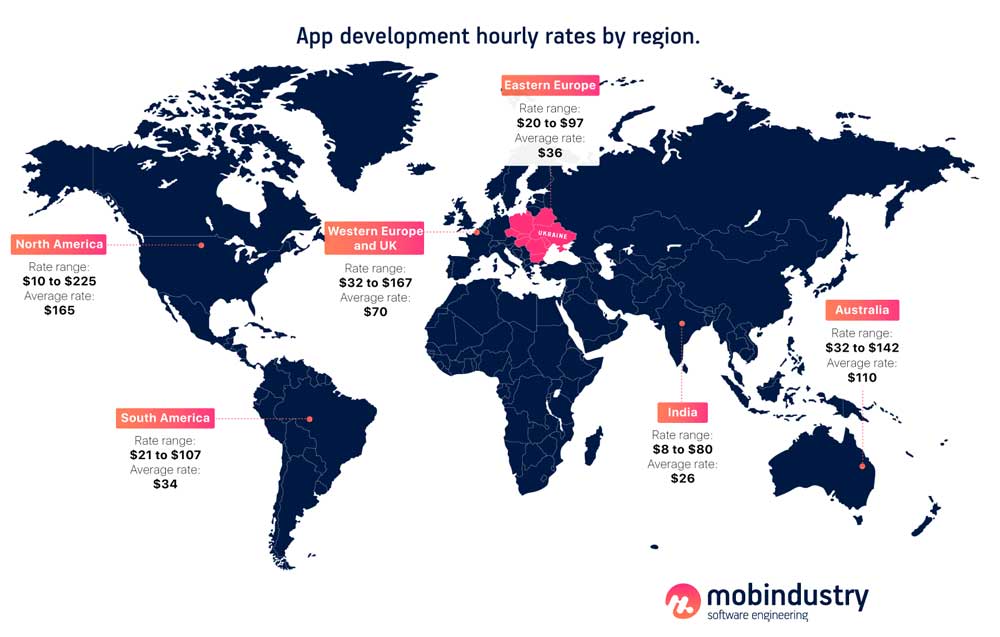
Many development companies say that mobile app support and maintenance takes 15% to 20% of the total yearly budget. From our experience, I can say that these numbers are far from the truth.
Technically, maintenance means only fixing bugs and adapting for new devices, screen resolutions, and operating system versions. However, after you launch your app, you need to take care of much more than that, including adding new features, integrating new technologies, creating new content, and adapting to the latest trends in features, design, and technologies. The cost of updating an app depends solely on functionality and your plans for its improvement.
Many development companies say that mobile app support and maintenance takes 15% to 20% of the total yearly budget – but it’s far from truth for most successful apps
All popular applications are always changing based on data from analytics and external factors. It’s nearly impossible to have a successful app and only invest 15% of the initial budget per year. This would be the case only if you created software, released it, and never changed it. However, in the real world, that doesn’t cut it.
Mobile app support and maintenance services can take from 20% to even 50% of the initial cost of your project each year. According to Comentum, maintenance of a mid-sized enterprise project costs from $5,000 to $11,000 per month. To get rid of legacy code and keep your software fresh, you may spend up to 50% of the annual cost of app maintenance.
For example, one of our logistics projects that initially cost $140,000 to make over the course of a year now costs $5,000 per month to maintain.
These are the reasons:
- A large number of users and constant growth of the user base
- Number of features
- Need for regular refactoring
- Adding additional features
The maintenance cost will depend on these and other factors. Make sure to consult with your developers on the cost of developing and maintaining an app.
Final thoughts
Mobile development is a process that never ends, even if you stop adding features to your software. However, updating and offering users something new is vital for your long-term success.
The average cost of maintaining an app is 15–20% of the initial cost of development per year only if you don’t add anything new to it and only do bug fixes and other standard activities. However, to retain users, you need to put in more effort. Your mobile app maintenance costs will depend on your project’s size, update frequency, number of features, and the technologies and third-party services you use, like maps and payment gateways.
We take mobile app maintenance very seriously and continue working on the projects we developed. To find out application maintenance costs for your project, contact us. We’ll estimate it and send you a mobile app maintenance contract template so you can learn more about how we work.


